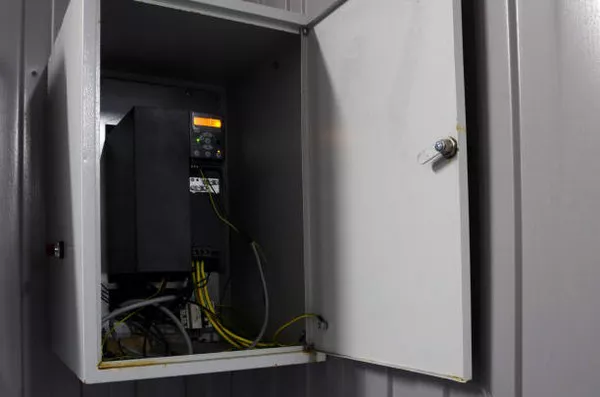In an era reliant on uninterrupted power, backup generators play a pivotal role in ensuring continuity during electrical outages. These devices, ranging from residential to industrial scales, provide a reliable source of electricity when the primary grid fails. Understanding the mechanics of backup generators unveils the intricate interplay of components and engineering behind their operation.
Introduction to Backup Generators
Backup generators are standalone power systems designed to automatically kick in when a primary power source, such as the main electrical grid, fails. They are commonly used in homes, businesses, hospitals, data centers, and other critical facilities where continuous power is essential.
The fundamental principle behind backup generators involves converting stored energy into electrical power. This stored energy is typically in the form of fuel (like diesel or natural gas) or batteries. When the main power supply is interrupted, the backup generator activates to provide electricity until the primary source is restored.
Components of a Backup Generator
1. Engine
At the heart of a backup generator is its engine, responsible for converting the potential energy of fuel into mechanical energy. These engines are often internal combustion types, running on fuels such as diesel, natural gas, propane, or gasoline. The engine is connected to a shaft that rotates at a high speed when fuel is burned.
2. Alternator (Generator)
The rotating shaft of the engine is connected to an alternator, also known as a generator. The alternator contains a series of coils and magnets that work together to convert the mechanical energy from the engine into electrical energy. As the shaft spins, it causes the coils to move within a magnetic field, inducing an electric current in the coils through electromagnetic induction.
3. Fuel System
Backup generators require a steady supply of fuel to operate. The type of fuel used depends on the generator’s design and intended application. Common fuels include diesel, natural gas, propane, or gasoline. The fuel system includes components such as fuel tanks, filters, pumps, and injectors (in the case of diesel engines) to deliver fuel to the engine for combustion.
4. Cooling System
Engines generate a significant amount of heat during operation, especially under heavy loads. A cooling system, typically consisting of a radiator and coolant fluid, helps regulate the engine’s temperature to prevent overheating. This is crucial for maintaining optimal performance and extending the lifespan of the generator.
5. Exhaust System
Like any combustion engine, backup generators produce exhaust gases that need to be safely expelled from the system. An exhaust system, which includes a muffler and piping, channels these gases away from the engine and generator enclosure to minimize noise and prevent harmful emissions from accumulating in the vicinity.
6. Control Panel and Automatic Transfer Switch (ATS)
Backup generators are equipped with sophisticated control panels that monitor the primary power supply and automatically initiate the generator when an outage is detected. An Automatic Transfer Switch (ATS) is a critical component that seamlessly transfers the load from the main power source to the backup generator without any manual intervention. Once the primary power is restored, the ATS switches the load back and shuts down the generator.
How Backup Generators Work
1. Detection of Power Failure
When the primary power supply fails, sensors in the backup generator’s control system detect the outage.
2. Starting the Generator
Upon detecting a power outage, the control panel signals the generator to start. In standby mode, the generator’s engine is kept in a state of readiness, ensuring a swift response to power interruptions.
3. Fuel Combustion
The engine begins to consume fuel (diesel, gas, etc.), which ignites in the combustion chamber. This process generates mechanical energy that drives the alternator.
4. Electricity Generation
As the engine drives the alternator, electrical energy is produced through electromagnetic induction. The alternator converts the mechanical energy into usable electrical power.
5. Power Distribution
The generated electricity is then routed through the generator’s output connections to the facility’s electrical distribution system via the ATS.
6. Monitoring and Shutdown
Throughout this process, the control panel continuously monitors the power supply. Once grid power is restored and stable, the control panel signals the ATS to transfer the load back to the primary source and shuts down the generator.
Types of Backup Generators
1. Portable Generators
These are smaller, versatile units that are manually operated and commonly used for residential purposes. They are fueled by gasoline or propane and can be connected to appliances via extension cords.
2. Standby Generators
Designed for permanent installation, standby generators are larger and more powerful units that automatically start when a power outage occurs. They are typically fueled by natural gas or propane and can supply power to an entire home or business.
3. Industrial Generators
Industrial-scale generators are used for large facilities, data centers, hospitals, and factories. They are capable of providing high levels of power for extended durations and are often customized to meet specific energy demands.
See also What Size Generator To Run Heat Pump? A Comprehensive Guide
Conclusion
Backup generators are vital assets that ensure continuity during power outages, safeguarding homes, businesses, and critical infrastructure from disruptions. By harnessing the principles of combustion engines and electromagnetism, these devices seamlessly provide electricity when it is needed most. Understanding the mechanics of backup generators empowers individuals and organizations to make informed decisions when selecting, installing, and maintaining these essential power systems.

